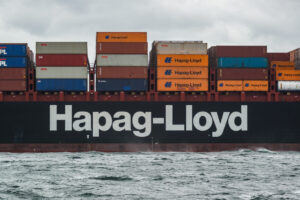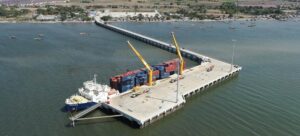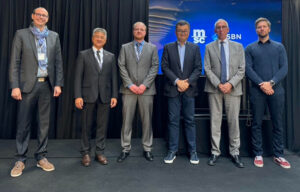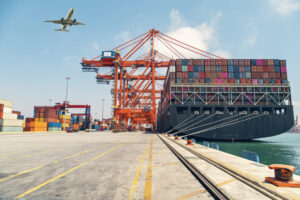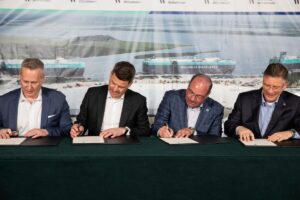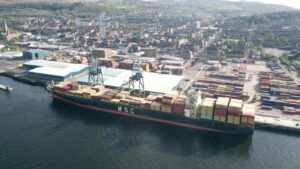The Port of Antwerp has deployed drones to help clean up floating debris around the port area.
According to the port, around 50 tonnes of debris is collected from the docks every year. This is made up of plastics, wood, cardboard, organic material, and mooring lines.
It is important to clean this waste up to reduce water pollution, the impact on biodiversity, and damage to ships, but this has proven difficult due to the size of the port complex.
Antwerp says the birds-eye-view provided by drones has made detecting this debris significantly easier. In its “machines vision”, Antwerp intends to have the devices flying over the port several times a day so that the clean-up effort can be done quickly and efficiently.
This emerging technology presents several advantages for the ports sector. The Port of Antwerp’s ambition is to develop a network of autonomous drones that can provide a ‘live feed’ of various port activities and support the Harbour Safety & Security (HSS) unit and its security partners as much as possible.
In order for the port to stream images in real-time, 5G will be used in near future, already being used in incident management.
In 2021, the fire department was supported by a live stream of drone footage via a 5G network to deal with a fire in the port area. Thanks to a combination of colour and infrared images, the fire department gained a better idea of the location of the fires.
Officials from the port recently explained the use of drones and other innovative digital applications in the port to Petra De Sutter, Deputy Prime Minister of Belgium and of Civil Service, Public Enterprises, Telecommunications and Postal Services, in the port’s Nautical Operations Centre (NOC).

“I see a glimpse of the future here in the Port of Antwerp. Drones that keep the port clean and safe. It is a good example of how digitalisation, a clean environment and the fight against climate change can go hand in hand,” said the Minister.
“I am really looking forward to the further added value that 5G can offer in terms of ecological applications. With the help of 5G, a drone can transmit very large amounts of data without any problem. This is not only good for the environment, but also for safety. The port is close to the city. If there is a fire, the thermal camera can immediately help the fire brigade.”
Piet Opstaele, Innovation Enablement Manager for the Port of Antwerp, added: “A clean and safe port is an absolute priority for the Port of Antwerp. The use of drones for floating debris detection is a fine example of how innovation and digitalisation can contribute to this.
“We were able to show the minister today how innovative solutions will make the port future-proof.”
Annick De Ridder, Port Alderman, also commented: “The Port of Antwerp is the engine of our economy. We need to keep that engine running as cleanly, safely, and smoothly as possible.
“The use of drones will allow us to locate floating debris in the vastly expanded port area systematically, intelligently, and efficiently from 2023. As such, thanks to innovation and digitalisation, we can reduce water pollution, impact on biodiversity and damage to ships to a minimum.”
The Port of Antwerp previously partnered with aerospace company Sabca to conduct fixed trials of a fixed-wing drone fitted with a camera to assess the technology’s potential in providing real-time on-site security imaging.


